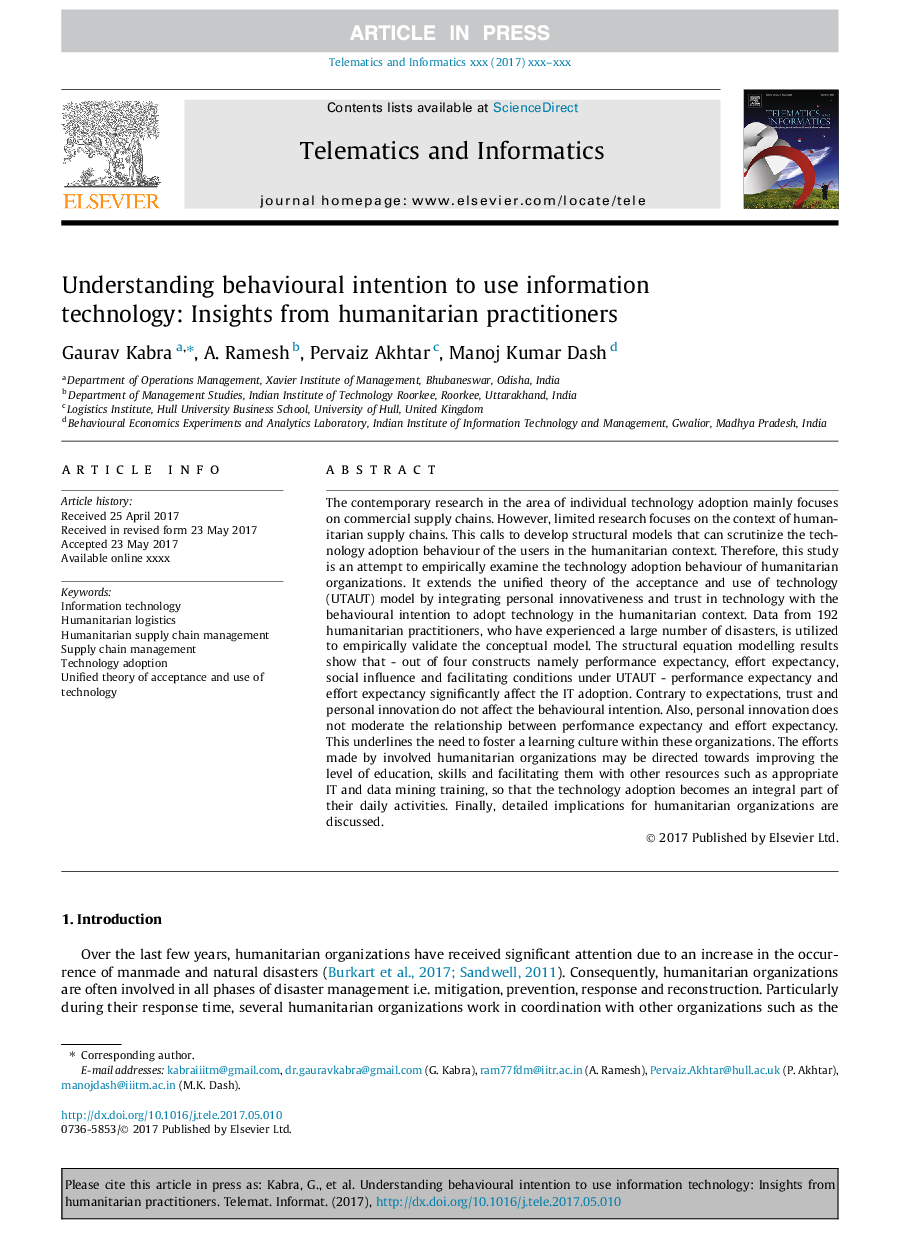| کد مقاله | کد نشریه | سال انتشار | مقاله انگلیسی | نسخه تمام متن |
|---|---|---|---|---|
| 6890020 | 1445145 | 2017 | 12 صفحه PDF | دانلود رایگان |
عنوان انگلیسی مقاله ISI
Understanding behavioural intention to use information technology: Insights from humanitarian practitioners
ترجمه فارسی عنوان
درک قصد رفتاری برای استفاده از فناوری اطلاعات: بینش از متخصصین بشردوستانه
دانلود مقاله + سفارش ترجمه
دانلود مقاله ISI انگلیسی
رایگان برای ایرانیان
کلمات کلیدی
فناوری اطلاعات، تدارکات بشردوستانه، مدیریت زنجیره تامین انسان دوستانه، مدیریت زنجیره تامین، پذیرش فناوری، تئوری یکپارچه پذیرش و استفاده از فناوری،
موضوعات مرتبط
مهندسی و علوم پایه
مهندسی کامپیوتر
شبکه های کامپیوتری و ارتباطات
چکیده انگلیسی
The contemporary research in the area of individual technology adoption mainly focuses on commercial supply chains. However, limited research focuses on the context of humanitarian supply chains. This calls to develop structural models that can scrutinize the technology adoption behaviour of the users in the humanitarian context. Therefore, this study is an attempt to empirically examine the technology adoption behaviour of humanitarian organizations. It extends the unified theory of the acceptance and use of technology (UTAUT) model by integrating personal innovativeness and trust in technology with the behavioural intention to adopt technology in the humanitarian context. Data from 192 humanitarian practitioners, who have experienced a large number of disasters, is utilized to empirically validate the conceptual model. The structural equation modelling results show that - out of four constructs namely performance expectancy, effort expectancy, social influence and facilitating conditions under UTAUT - performance expectancy and effort expectancy significantly affect the IT adoption. Contrary to expectations, trust and personal innovation do not affect the behavioural intention. Also, personal innovation does not moderate the relationship between performance expectancy and effort expectancy. This underlines the need to foster a learning culture within these organizations. The efforts made by involved humanitarian organizations may be directed towards improving the level of education, skills and facilitating them with other resources such as appropriate IT and data mining training, so that the technology adoption becomes an integral part of their daily activities. Finally, detailed implications for humanitarian organizations are discussed.
ناشر
Database: Elsevier - ScienceDirect (ساینس دایرکت)
Journal: Telematics and Informatics - Volume 34, Issue 7, November 2017, Pages 1250-1261
Journal: Telematics and Informatics - Volume 34, Issue 7, November 2017, Pages 1250-1261
نویسندگان
Gaurav Kabra, A. Ramesh, Pervaiz Akhtar, Manoj Kumar Dash,
